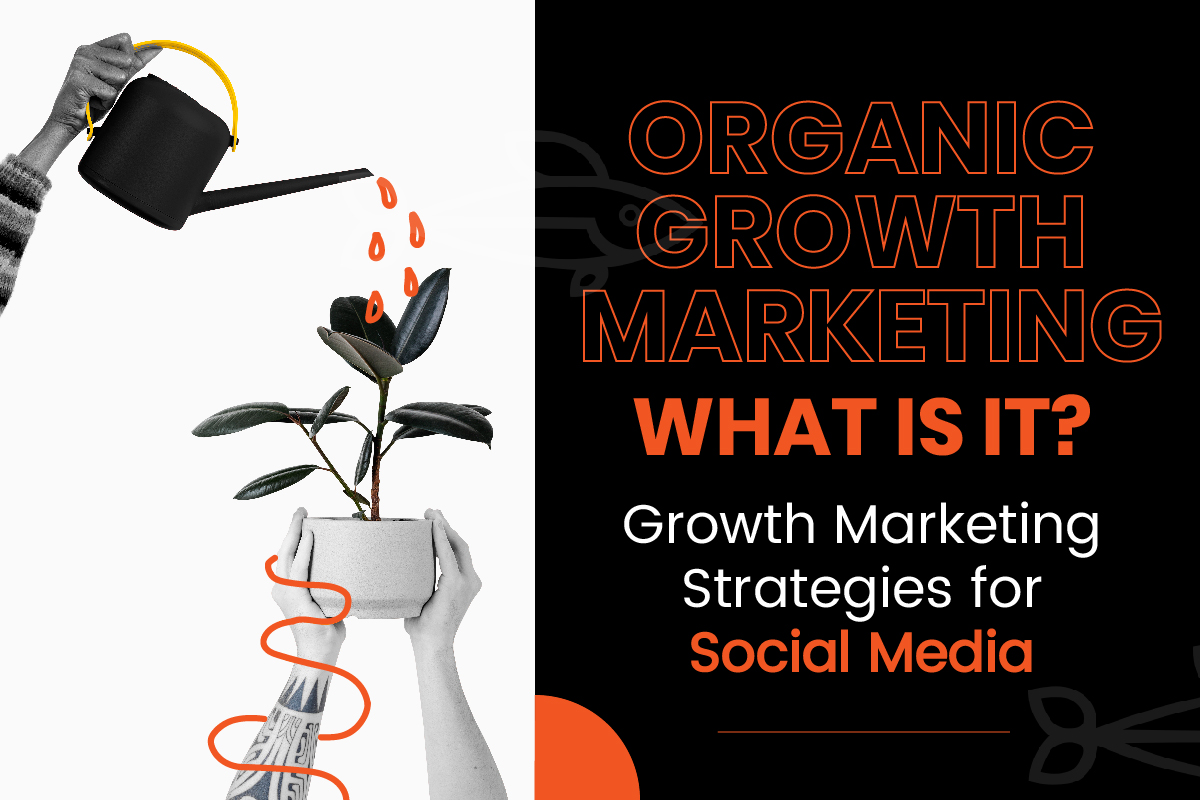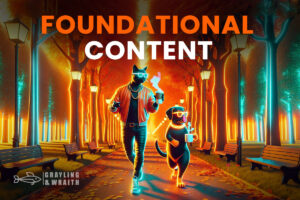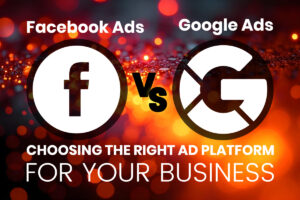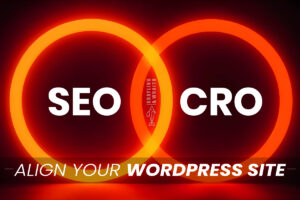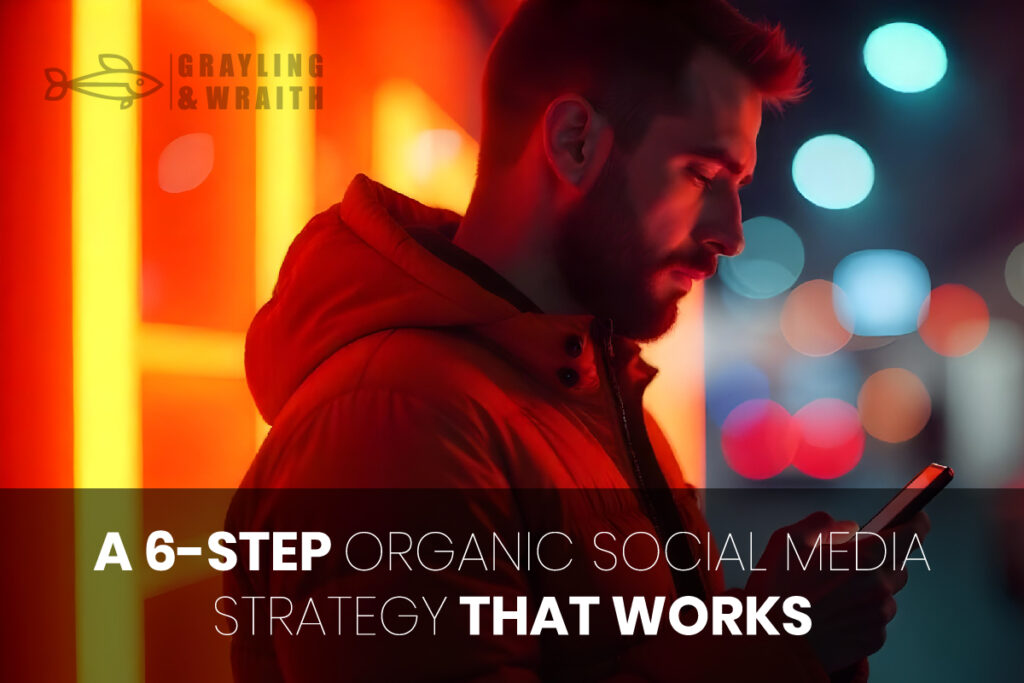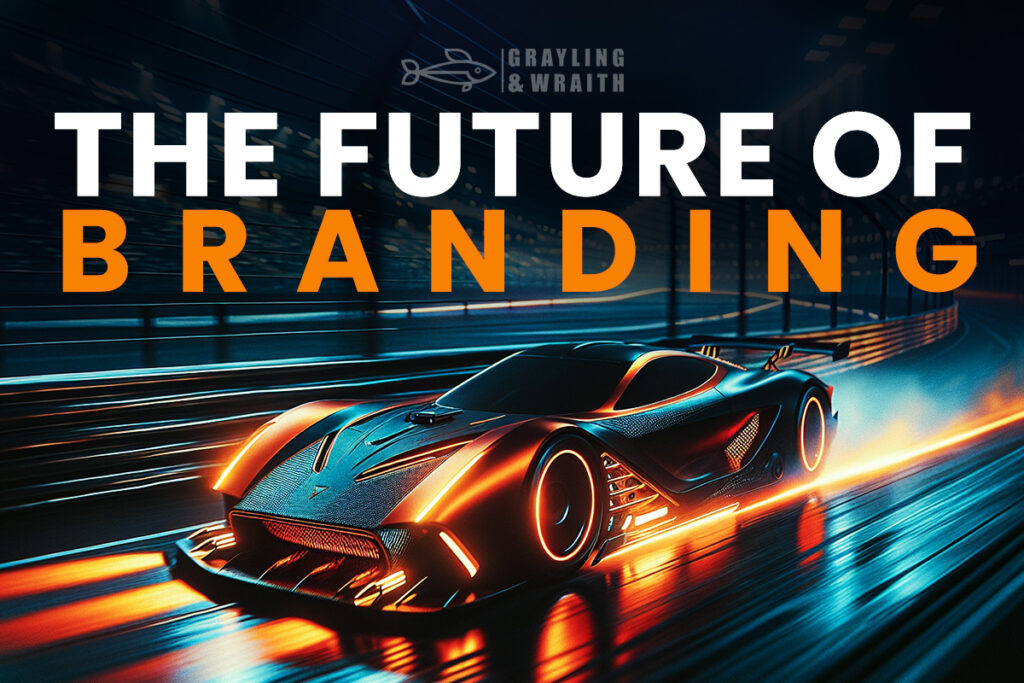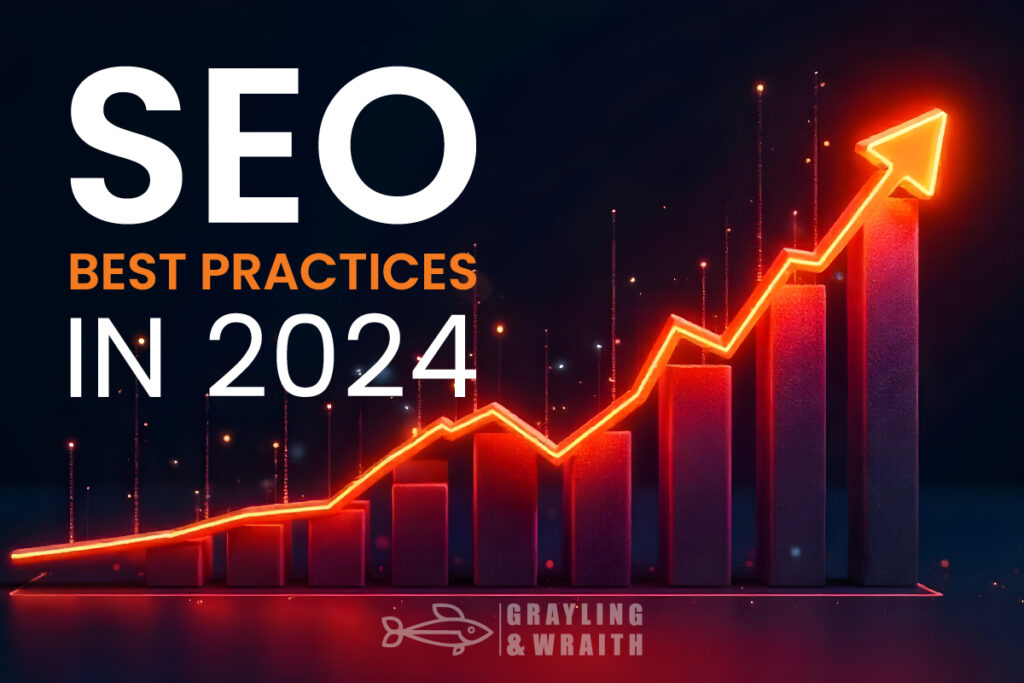Around 30 million small businesses are now operating in the US with over 200 billion dollars spent collectively annually, making it harder for businesses like yours to become recognized and respected in your marketing space. Growth Driven Marketing will serve your business goals in this regard. Your business needs an all-encompassing strategy to acquire new qualified leads. It also needs to retain existing customers. This approach is essential if you want to compete directly against the most powerful and iconic brands in the industry.

Competition in today’s marketplace is fierce, and the presence of more and more competitors in your industry niche makes it critical that you continue to improve your business efficiency. Growth Driven Marketing is an increasingly attractive method by which to do that. Over the decade, interest in growth marketing has steadily increased among Google Trends and finished 2021 as the top trend in the B2B Marketing Trend Tracker.
Growth Driven Marketing has redefined how businesses and companies attract potential customers and retain existing ones. Efforts no longer focus exclusively on the top of the sales funnel, emphasizing customer acquisition. Still, rather businesses are now concentrating on attracting customers that will stay over the long term. Even as small businesses and brands begin to add growth marketers to their staff, most business people still have a rudimentary understanding of Growth Driven Marketing and much less about how it powers their overall marketing strategies.
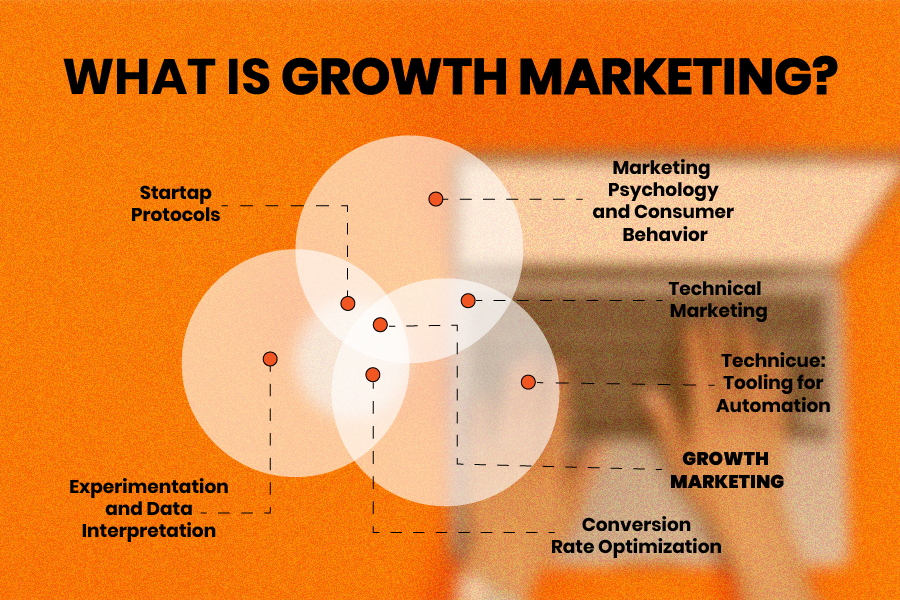
What is Growth Driven Marketing?
Looking for ways to improve conversions through conducting experiments, analyzing results, and carrying out necessary experiments when needed. The principle behind Growth Driven Marketing is simple – focus on what successfully serves your business goals and conduct more tests on strategies that are less productive.

Following the agile development model, Growth Driven Marketing operates cyclically. Performance is continuously monitored and periodically adjusted to achieve better results. It is user-focused, experimental, and repetitive. Growth marketing’s focus extends beyond just the top funnel of the sales cycle. Growth marketers may aim to increase click-through rate, conversion rate, or active users. They identify marketing channels and solutions that capture new customers to the business and ultimately increase revenue.
Growth Marketing takes traditional marketing to new heights, using detailed data, including A/B testing, data-focused email marketing campaigns, Search Engine Optimization, and technical analysis of a user’s experience in every stage of the sales funnel. Growth marketing doesn’t pay particular attention to just one part of the panel, rather, it looks at the entire customer lifecycle. The insights gained from the repetitive experiments are used to achieve robust and sustainable growth.
At the end of the day, Growth Driven Marketing is all about repetitive testing.
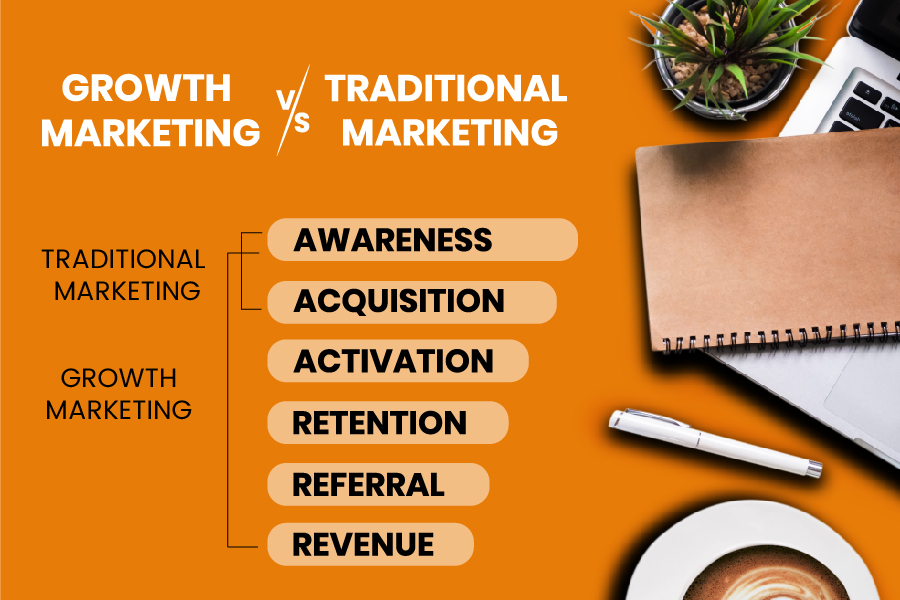
Growth-Driven Marketing vs Traditional Marketing
Traditional marketing is often creative and focuses on short-term successes, relying on a fixed budget with a “set it and forget it” approach, such as Google Adwords campaigns. While effective for driving top-of-funnel traffic and increasing brand awareness, its impact diminishes once the budget is depleted. In contrast, Growth Driven Marketing is a scientific approach that targets the entire customer lifecycle for long-term results, nurturing ongoing customer connections and opening opportunities for retention and conversion.
Growth Driven Marketing enhances the marketing funnel by attracting, engaging, retaining, and converting users into brand ambassadors. This strategy leverages customer data to refine audience targeting and optimize marketing efforts through hypotheses, market experiments, analysis, and adjustments. Tactics include SEO, paid advertising, social media promotion, content marketing, A/B testing, and conversion rate optimization. Brands benefit from continuous customer insights, enabling smarter, data-driven decisions that align products with customer needs.
In essence, while traditional marketing emphasizes customer acquisition, Growth Driven Marketing prioritizes customer retention. Growth marketers collaborate across teams, using data to test and refine marketing strategies, embracing a high tolerance for experimentation, and quickly exploring new options. This approach ensures businesses can adapt to customer behavior and make informed decisions, ultimately fostering stronger customer loyalty and driving sustainable growth.
Retaining existing customers is just as critical as capturing potential users.
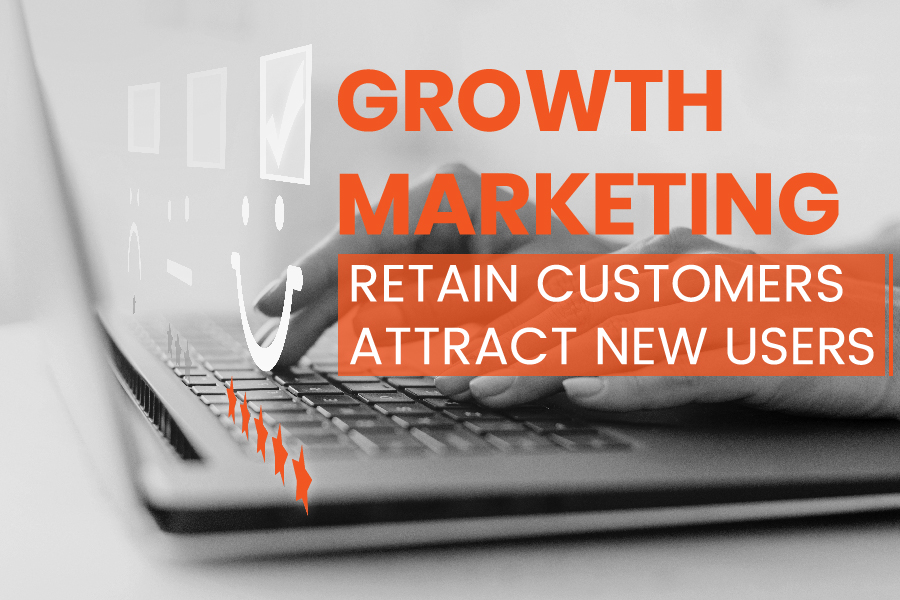
Growth hacking vs. Growth Driven Marketing – are they the same?
Although Growth Driven Marketing and growth hacking are terms often used interchangeably, there are subtle differences between the concepts they represent. Growth hackers are tasked with finding creative solutions to big problems with all speed, whereas growth marketers solve for the long term. It is all about speed in the case of growth hackers, and it is all about sustainability for growth marketers.

Both growth hacking and Growth Driven Marketing focus on customer data. Growth hackers use a collection of innovative experiments and constant analysis to acquire customers as quickly as possible at the lowest possible costs per conversion. They rely on using technology to generate sales and profits.
By contrast, growth marketers hypothesize, experiment, and adjust their different channels and strategies at regular intervals, optimizing their tests to precisely determine the most economical ways to engage their marketing targets.
Why does Growth Driven Marketing work?
Successful growth marketers don’t just increase a user base; they also build a highly engaged audience that will increase the lifetime value of each user. When you build a customized approach to marketing, your business cuts acquisition costs in half, increases revenue by up to 15%, and improves marketing budget efficiency by 30%.
When you prioritize providing an experience valuable to your customers, you offer customized content designed to realize conversions and maximize revenues. Your marketing team looks for ways to individualize– to provide valuable information to each customer’s changing journey. Growth-driven marketing focuses on establishing engagement and fostering loyalty to ultimately increase each customer’s lifetime value to your business.
The chance of selling to an existing customer is between 60-70% while it’s only between 5 to 20% when selling to a new prospect.
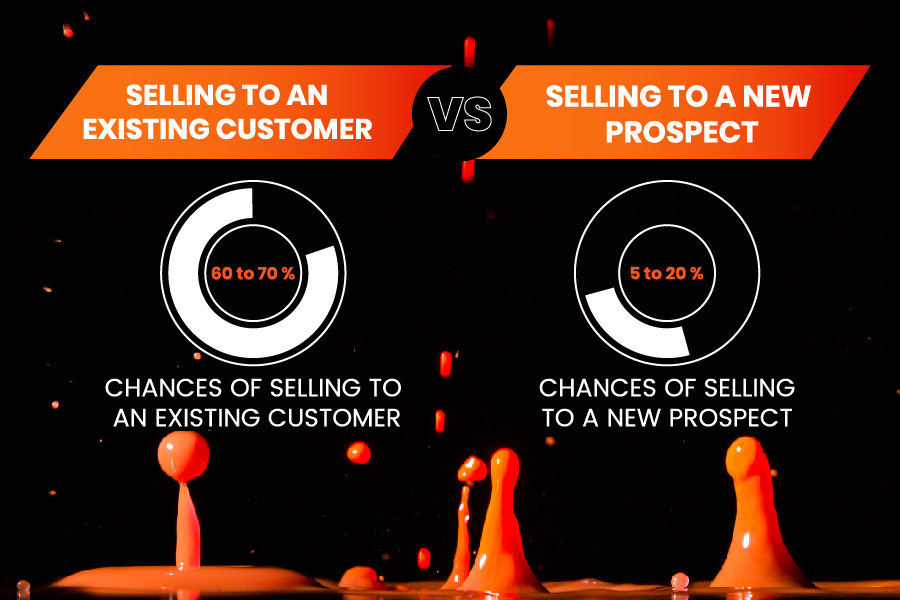
Because Growth Driven Marketing adopts a holistic approach to marketing for customer retention, it can:
Increase brand recognition
Growth Driven Marketing concerns itself entirely with generating a slow, steady increase in your brand’s reach. As you constantly conduct your marketing tests, analyze the results, and build on successful approaches, you can make your brand attractive to consumers. Through a series of tests, you will learn what content, what landing pages, and what web designs deliver the kind of results that help you achieve your business goals. If you understand your customer’s pain points, their points of confusion, and their needs and desires, you can resolve them all, and this provides value to your audience. Once your brand provides what your target audience needs, word-of-mouth advertising begins to serve your ends by building brand recognition. Initially, Growth Driven Marketing helps level the playing field and eventually improves brand performance against the competition.
Improve existing campaigns
It costs five times more to recruit a new customer than it does to retain an existing one. Increasing customer retention by 5% increases profits by 25-95%. Following your target audience on social media platforms provides a wealth of insights into their behaviors that you can use to retain them as customers. You can also explore new ways to gather additional data on their consumer habits.
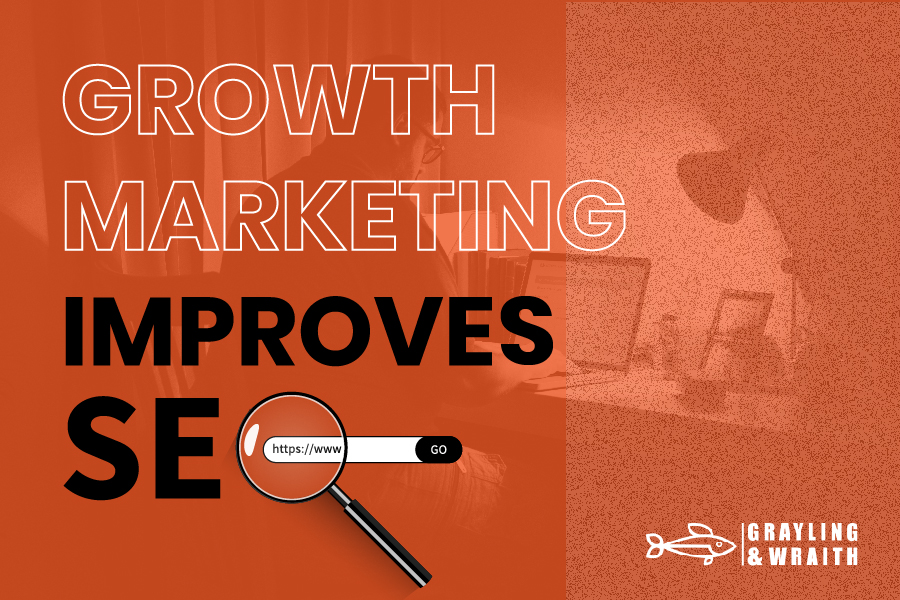
Improve SEO
Consistent Growth Driven Marketing will improve SEO by customizing content that adheres to algorithms. It becomes easier to link such content to other websites, thereby increasing your chances of ranking higher among search results. Your articles will be more likely to appear when someone uses keywords relating to your business. Moreover, if you are on social media running PPC campaigns, the compiled data will provide insight into which keywords are performing to best serve you. You can use these data to provide content that resonates well with your audience.
Add value to the content
The longer your content is alive, the more it drives backlinks. As your content matures, the more interlinks you produce within your content. Search engines trust content that has been available longer. By providing customized content through Growth Driven Marketing, you can keep existing customers loyal. Customer acquisition is important, but it is more important to keep them. Ensure that your blog posts, articles, and other content are not just targeted to the top of the funnel, but instead, focus on each stage of the customer journey.
Growth Driven Marketing needs constant data analysis. It is an ongoing process of gathering and analyzing data and then adjusting ads to build more sales. The focus isn’t on a single strategy but instead is a broader one– a focus on multiple approaches meant to increase growth no matter how big or small that growth may be. This broad view helps both business efficiency and scale.
The feedback loop allows growth marketers real-time access to sophisticated data about their campaigns and customer behaviors, so they can quickly conduct tests and analyze results to maximize their strategies.
Components of growth marketing
Growth marketers have many tools at their disposal for attracting, converting, and retaining customers. Some popular tactics include using social media ads to reach new people with targeted demographics, creating engaging content, and allowing users an opportunity to interact with your site–sometimes by claiming or purchasing something immediately upon signing up.
The two main components of Growth Driven Marketing are:

A/B testing
A/B testing, also known as split or bucket testing, compares two versions, “A” or “B”, or multiple tests to determine which content variations engage the audience better and improve conversion rates. Each variant features unique graphics, copy, design, and features, shown randomly to users. Marketers use statistical analysis to identify which variant performs best for a specific conversion goal. This process enables future marketing campaigns within Growth Driven Marketing to be optimized based on the successful variant, enhancing performance with each test. It’s crucial to note that a successful “B” variant with one audience may not perform similarly with another. Therefore, customize segments rather than sending A/B tests in batches to refine understanding of content preferences for each audience group. If a variation succeeds, continue making iterative modifications to improve results further within the Growth Driven Marketing framework.

Cross-channel marketing
Cross-channel marketing is an innovative strategy used to create a seamless experience for customers across all channels. This technique can be applied in both digital and traditional advertising methods, including SMS messaging, email marketing, push notifications, social media posts, and other channels where your audience can be found.
Growth-Driven Marketing in Organic Social Media
Understanding your target audience’s preferred mode of communication can help you create a more effective cross-channel marketing strategy. For example, if they’re primarily online and use social media as their favorite outlet for discussions with friends, then it is best to focus solely on this channel to make sure content reaches them and to keep up with conversations happening within these networks.
Although social networks pressure brands to spend money on paid social, organic social media is crucial to success. Organic social media boosts validity. When users see your social media ads, the next step is to visit your social profile. If you don’t have an organic social media strategy to supplement your paid efforts, your profile will almost certainly show a lack of followers and engagement. Through organic social media, you foster an authentic relationship with your potential customers. Regardless of the size of a business, organic social media is a cost-effective strategy that shows commitment to long-term business goals.
Social media networks continue to adjust their algorithms and integrate new features. This forces businesses to adapt to generate a steady growth of audience. With such brutal competition against both iconic and emerging brands, it is more important than ever to identify and incorporate new Growth Marketing strategies into your social media marketing practice.
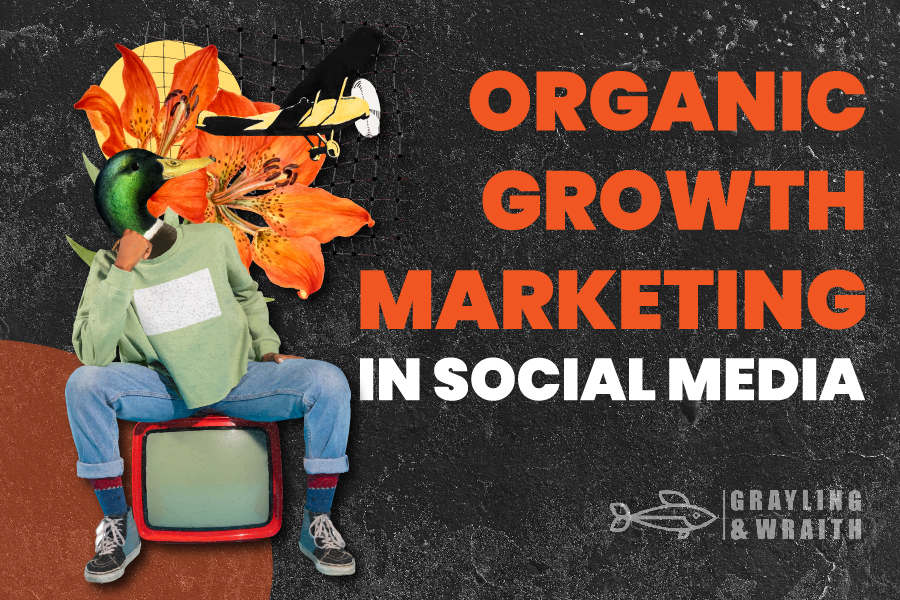
No matter how many times the algorithms change, successful marketing demands that a business foster an authentic connection with its audience. Listed below are a few of the ways you can grow your social account organically:
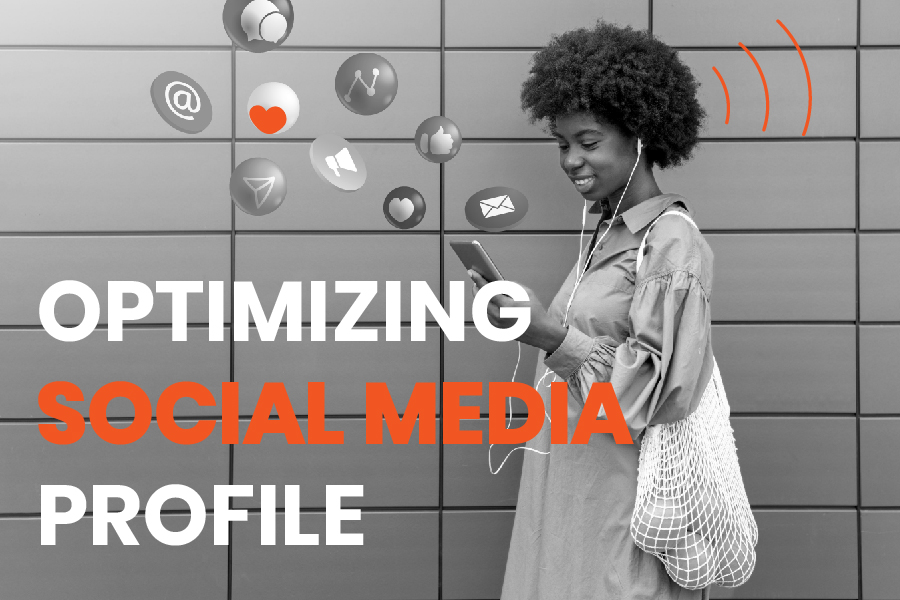
Build a strong foundation
Ensure that you get the basics right when it comes to your social media accounts. Optimize your social profiles by adding your brand name and updating your business biography with relevant information. Include a link to your website and your social accounts in each profile, so your followers can follow you on all of your platforms. As you increase brand awareness through Growth Driven Marketing, more people will become interested in your business. When your audience visits your website, they can investigate your content and learn more about your business.
Invest in content production and distribution
Eighty-eight percent of marketers have successfully achieved their goals of increasing brand awareness and building credibility and trust through the use of content marketing (Content Marketing Institute, 2021). Content production and content marketing are essential to win over your audience and turn them into brand ambassadors. Consider diversifying your content to generate more traction and engagement. Besides blogs, consider incorporating videos, infographics, and user-generated content.
Engagement is no longer limited to timeline posts. Cover all your bases by engaging your audience through Reels and Stories. Instagram Reels, Instagram Stories, and Facebook’s MyDay stories offer opportunities to increase your engagement rates and consequently, your organic growth. Be consistent in posting reels and stories to keep building momentum.
Join in the conversations about your brand
Engagement doesn’t happen in one-sided dialogues. Interact and join in discussions about your brand to make your brand more approachable and relevant. Social listening allows you to know what topics are trending and what followers are saying about your brand or industry. With social listening, you accumulate an understanding of your target audience. You can track mentions of your brand and your content to learn what sentiments they share around your products, services, or brand. Don’t just track your social posts, but also focus on social posts about your topics. With social listening, you can uncover thousands of posts that you can repurpose for your social media.
Trust in User-Generated Content
Consumers consider User-Generated Content 9.8x more powerful when compared to influencer content. Seventy-nine percent of people share that this kind of content influences their purchasing decisions. Harnessing customer and employee content maximizes your brand reach and humanizes your brand. User-generated content is a cost-effective strategy within Growth Driven Marketing that maximizes ROI.
To generate content from users, run contests and promotions. Include in your eligibility requirements a “follow” of your brand or a tagging of friends for more exposure. You can also use a Question-and-Answer format to engage with your audience. Not all User-Generated Content is created equal. Each type of UGC serves a different platform. For example, a UGC photo of a customer enjoying your product will work best on Instagram whereas reviews would serve you best on your website.
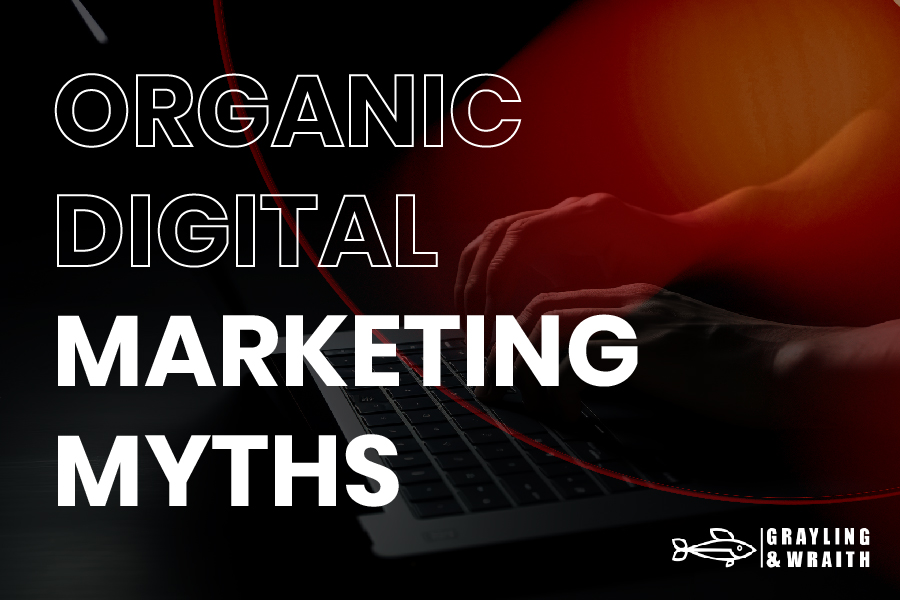
Debunking Growth Marketing Myths
Growth marketing is not the be-all and end-all in generating organic traffic for your brand. Your brand may apply data-driven performance optimization and experimentation in your strategies but without maximizing organic factors, you are wasting much of your effort.
Listed below are the most critical growth marketing myths and what you can do to improve your strategies:
Organic Growth is free
Often, people see organic growth as free marketing. However, you will find you need to hire professional marketing specialists. They strategize, systematize, optimize, and effectively execute your strategies. This approach is essential to consistently outperform the competition. Organic growth isn’t a free marketing resource: it is rather, a non-intrusive and subtly manipulative marketing approach. Your brand needs to establish strategies that take into account your customers’ behaviors and purchasing intentions. Ensure that your content is important to your audience to prevent them from muting, blocking, or boycotting your brand. You can determine what your audience needs through ad targeting, A/B testing, market research, etc.
Organic marketing is a short-term solution for those who don’t have the budget
Some businesses rely on organic marketing campaigns only when they have a limited budget, and as soon as their budget is expended, they elect to no longer employ organic marketing solutions. Organic growth marketing solutions are not a business extravagance, they are a necessary and practical response to competitive pressures.
Although ads are effective in generating traffic, they aren’t effective in creating customer loyalty. To build brand loyalty in your target audience, your brand needs a good conversion trigger. You can find this trigger on landing pages after displaying and clicking on all the ads.
Put quite simply, organic growth keeps your entire strategy functioning smoothly and moving continuously in concert with your business goals. Even when you have impressive and memorable advertising, without equally impressive and memorable organic strategies, you cannot assume anything about your website’s reliability and responsiveness to the market forces motivating your clientele. In addition, you miss too many opportunities for optimizing conversions without organic campaigns.
The key to organic growth marketing is to understand the customer journey from the top of the funnel to the bottom, and then to optimize them from the bottom up. This reverse engineering will allow you to both anticipate and guide customer behaviors.
To make conversion rate optimization (CRO) work, you need to conduct frequent experimentation, analysis, and adjustment of your strategies. Ensure that your tests are carefully structured to transform traffic into revenue more efficiently.
Organic strategies cannot be scaled
Expanding Growth Driven Marketing isn’t about the marketing budget. If you scale your ad campaigns, you only scale the traffic, not the sales. Running big-budget ads with low conversion rates is the equivalent of searching the haystack to find the needle. This is why organic growth marketing is important. “Organic growth” is a strategy that focuses on the conclusion of the journey rather than on the beginning. “Organic growth” is a strategy that can lead to higher scalability for businesses. These enterprises focus more of their resources on building up customer trust. This focus then results in increased sales.
By giving your customers what they want in terms of information and humane treatment, rather than by trying to coerce them through ads or interrupting their experience with other brands all over the web–you will encourage them to engage with your products and services organically. Organic engagement means they have been convinced to trust your expertise and your products and services. Trust will allow them to form more certain and dependable purchase intentions and act in your favor out of intrinsic brand loyalty. Organic campaigns within Growth Driven Marketing guarantee that your customers are less expensive to retain and even easier to monetize.
Summary and Next Steps
Pushing too hard for an immediate sale can discourage or even antagonize your target audience. Instead, you need to focus on a long-term strategy that helps your audience gain brand familiarity and loyalty. The key is to focus on consistent testing, analysis, and revision of your marketing strategies. This approach helps to constantly improve engagement by always offering a better customer experience than your competitors. You can attract and retain an audience through organic social media channels and paid social ads. Additionally, strategies that include A/B testing can optimize your social sharing, ads, and content. This will maximize engagements and boost conversions.
Interested in taking your marketing to the next level? Read our article on How to Design an AI Marketing Strategy.

